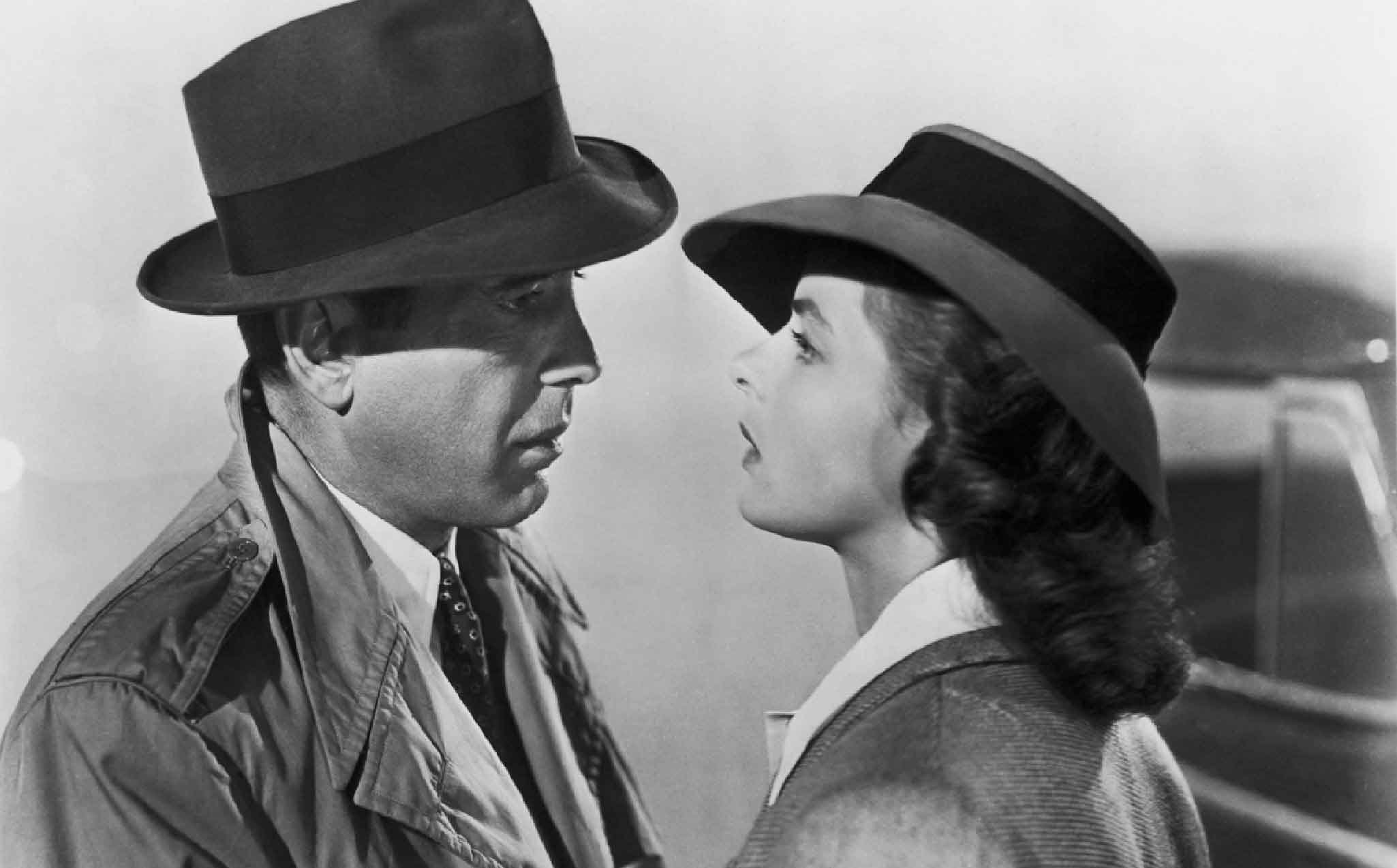The future of the past: Casablanca and its endurance
Yesterday marked seventy-nine years since Casablanca — the classic Hollywood romance starring Humphrey Bogart and Ingrid Bergman as former lovers caught in the geopolitical conflicts of WWII-North Africa — opened to the general public after a premiere in New York City the previous November. In the years since, the film has come to be revered as one of the greatest ever — regularly appearing in critics’ lists and receiving special screenings in movie theaters across the country.
But what is the future of Casablanca? The image of Bogart and Bergman staring into each other’s eyes, standing on the tarmac from which Ilsa (Bergman) will take her plane away from self-sacrificing Rick (Bogart) and to safety, is emblazoned upon the cultural consciousness — but does anything else about the film register? How many people under the age of sixty know its plot, or have the patience to sit through it? Casablanca is a very talky movie, and even with the kitschy narration and maps of Europe that blast through its bombastic opening sequence, the film requires a knowledge of history that may be too buried in the past for the average viewer to comfortably follow along.
In today’s world, where movies — or the people who make them — sustain audience interest by interweaving a roster of familiar characters through film after film, sequel after sequel, what context is there for caring about this grey-scale photo of a guy with a basset hound face, and a woman who looks like she belongs in a perfume ad?
There’s something terribly vulnerable about the sight of Rick and Ilsa now: shrouded in trench coats and wide-rimed hats, clutching to one another as though stranded on a tiny desert island in the middle of the ocean. They are the sole survivors — the two faces from the old days which are still routinely thrust into the cultural orbit by Warner Brothers’ faithful yet rather unimaginative publicity department.
I think they need reinforcements. Two years from now will be the eightieth anniversary of Meet Me in St. Louis. The year after that, Mildred Pierce. On the seventy-five-year calendar, we can celebrate Out of the Past this November, The Treasure of the Sierra Madre one year from now, and The Third Man can be re-released just before the next Presidential election. (Reminding voters of the lingering danger of fascism is always a good move.)
Why not publicize these movies? Why not play them for a limited time in theaters and then throw them under the spotlight on streaming services like Netflix and Disney+?
These are some of the most compelling films ever made, yet they will only endure if their owners decide that they will. People always want to have a good time at the movies, and studios want to make a quick buck off of reliable material. What could be more reliable than a movie that’s been beloved by (albeit shrinking) generations of viewers for more than three quarters of a century?
Of course, there’s a common myth about why this isn’t feasible. It’s widely understood that black and white movies are “boring” — that their style of acting is over-the-top, and that their special effects are laughably obvious. To these complaints I say: the highest-grossing movie last year featured a twenty-five year old British man in spandex pretending to be an American teenager who fights computer-illustrated aliens by shooting cobwebs out of his wrists.
If people can swallow that pill, they can certainly enjoy Singin’ in the Rain.
The only reason most people are skeptical toward old movies is because they’ve been taught to view them as dull. It may be that in order for our world to embrace old movies there has to be a shift in its overall aversion to “old” things: within a culture obsessed with youth, what place is there for a movie that is filled with dead people?
In a way, Casablanca is more urgent now than it was when it was first released in the midst of a World War. The very fact of its fading currency points to the demise that meets each of our lives — the fact that we, too, will one day find ourselves to be seventy-five, estimable and lain aside. Yet Rick and Ilsa, forever saying goodbye in the fog of a soundstage in Burbank, stand ready to meet that uncertain future with fortitude and grace. They face the unknown with a nobility that, whether or not it amounts to a hill of beans, is all we can ever muster when confronted with the inevitable passing of time.
